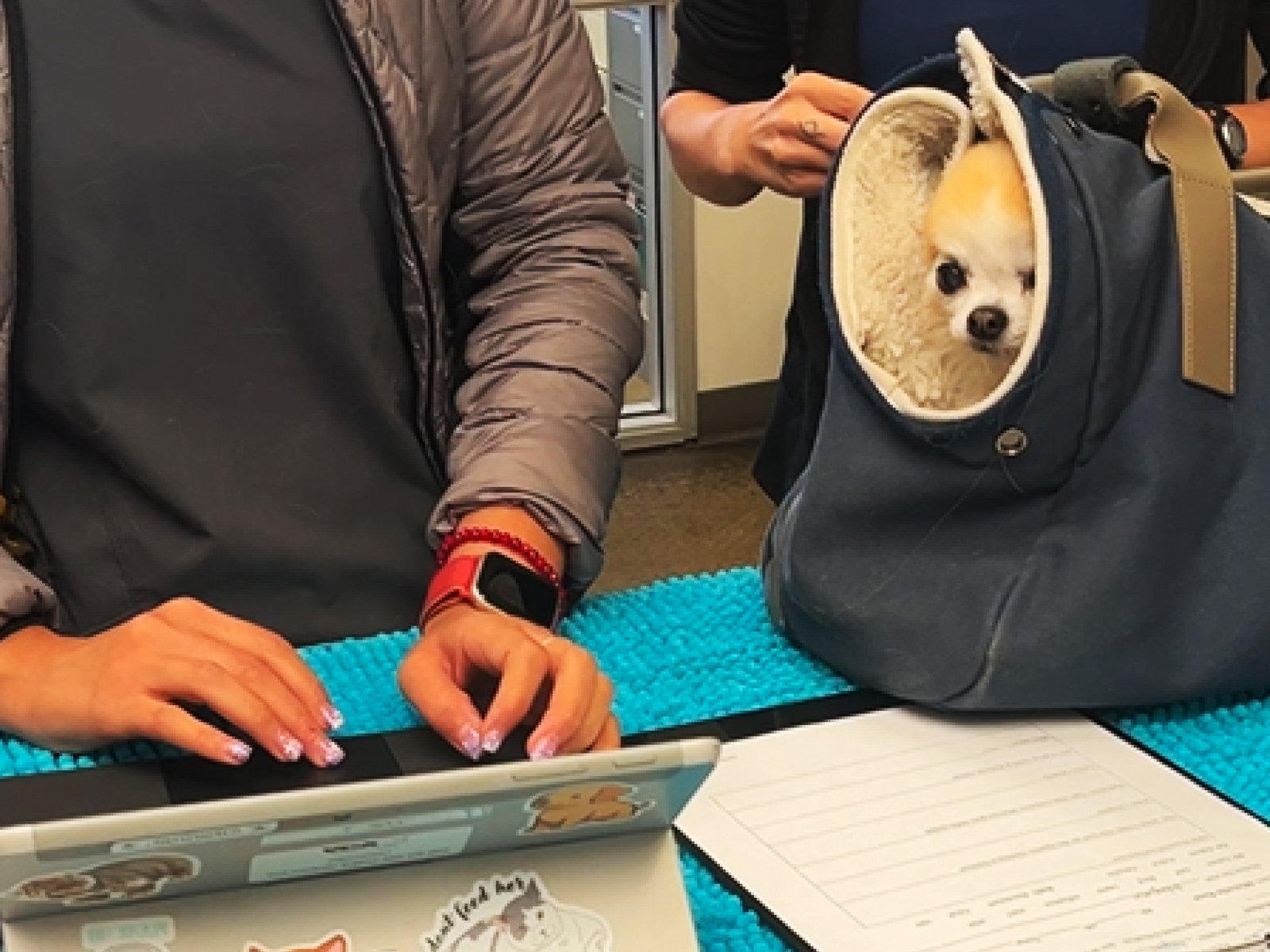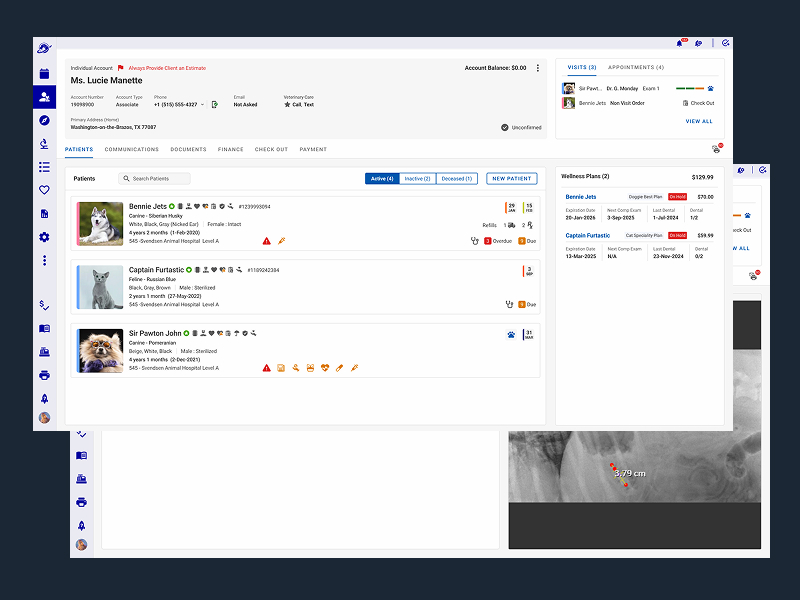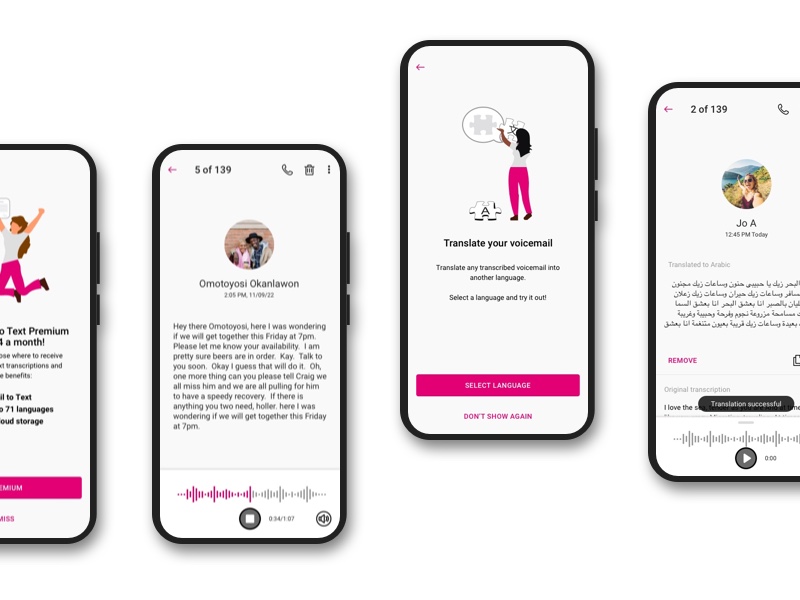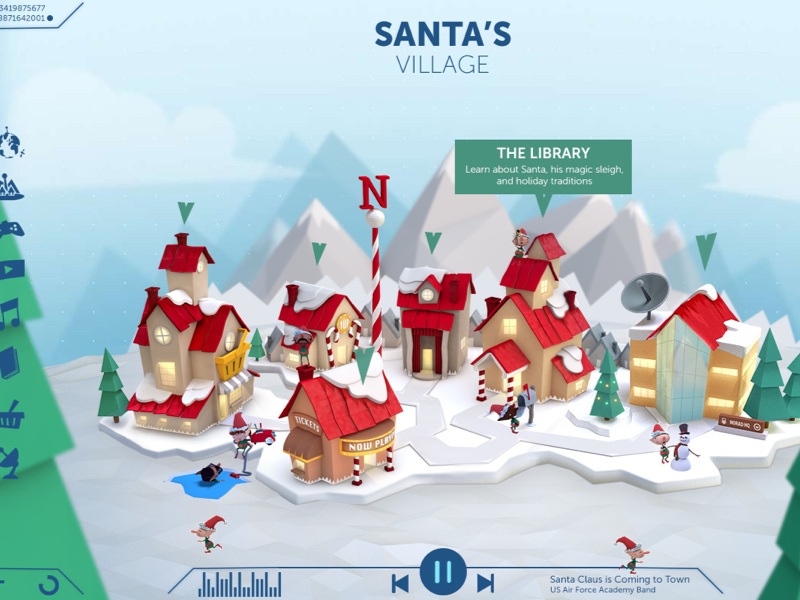Project Summary
What was asked?
T-Mobile wanted to create a communication and collaborative meeting service that features audio and video calling, screen sharing with an interactive whiteboard, contact management, and file sharing multi-platform applications that can also test the limits of the T-Mobile 4G and 5G network.
What I did?
- Develop a feature rich meeting application targeted to multiple form factor devices
- Created the audio/video meeting, screenshare, and digital whiteboard experience across native mobile and desktop/web
- Explore commercial and customer needs with the solution
- Adhere to accessibility guidelines towards Level AA and AAA compliance
Final Product
For brevity, just the iOS version is shown in this case study.
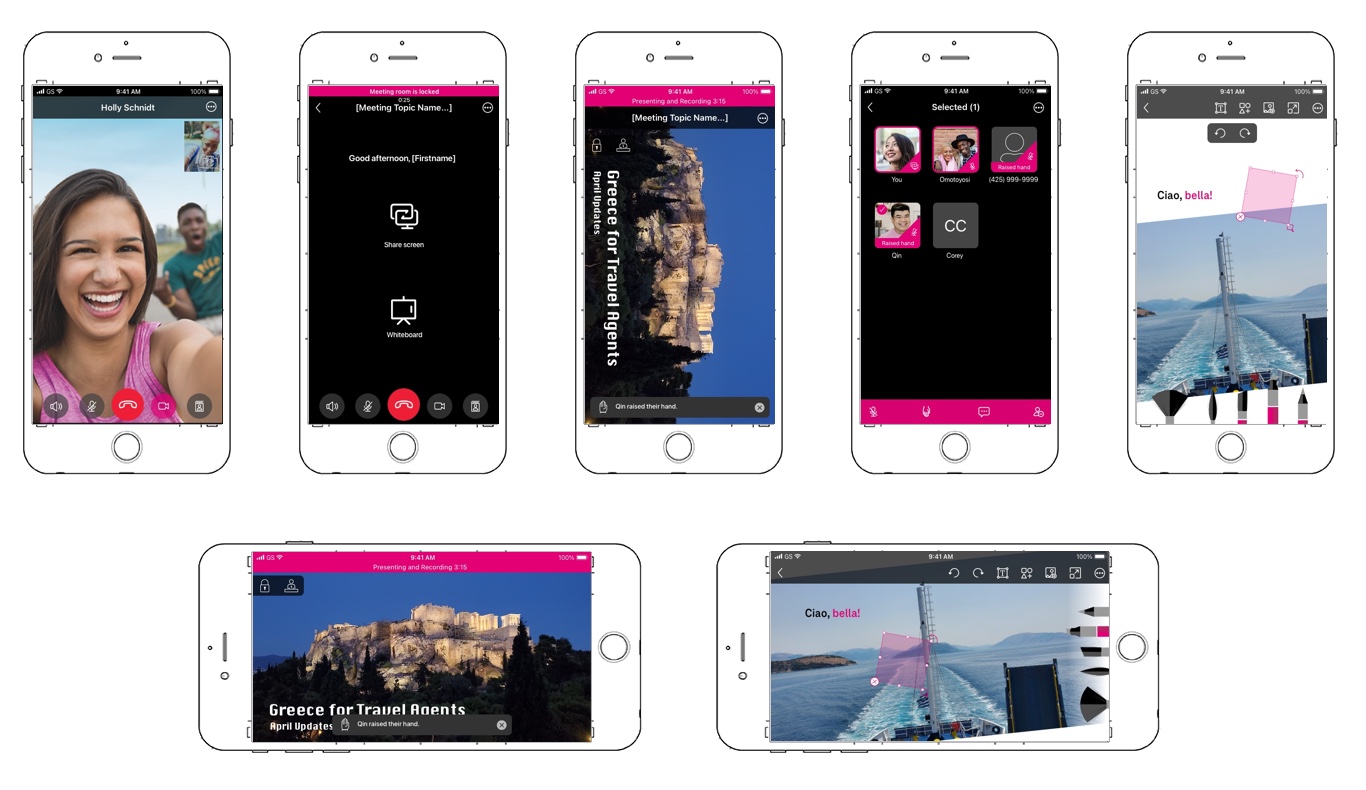
Impact
The product was not released commercially, however it accomplished:
- Network traffic technology efficency improvements by 7%
- Saving months of research and development by incorporating features into other core commercial products e.g. DIGITS
- Investing in building a 15-member UX team to support a broader product portfolio
- Promoting to Team Lead and overseeing the product design of multiple products
Challenge
Working initally with three other UX colleagues in phase 1, later expanded to fifteen in phase 2, we were tasked with creating a multi-platform communication application. The primary focus was to imagine a proof of concept with a secondary goal of testing out the network technology stack using real-life user scenarios with the intent to create a potential MVP.
My role on the product started with creating the product experience for the Virtual Meeting and Conference Feature; focusing on audio and video calling, screensharing, and virtual whiteboarding. I started Mobile First for Android and iOS Native Apps, then I worked on the Desktop and Web platforms. My colleagues worked on the other features of the apps and the visual design.
Approach
Start with research
"Open office plans are noisy and makes taking meetings tricky, often there is never enough meeting space available." - a research participant
As I began thinking about the concept, I started with myself as a primary user as I frequently take meetings away from my desk as not to disturb colleagues. I interviewed colleagues and friends on how they imagine desk-free virtual meetings would be like on a mobile device. A common theme is the quote above. Open offices are distracting and there are never enough conference spaces. Though behaviour didn't always follow what was said.
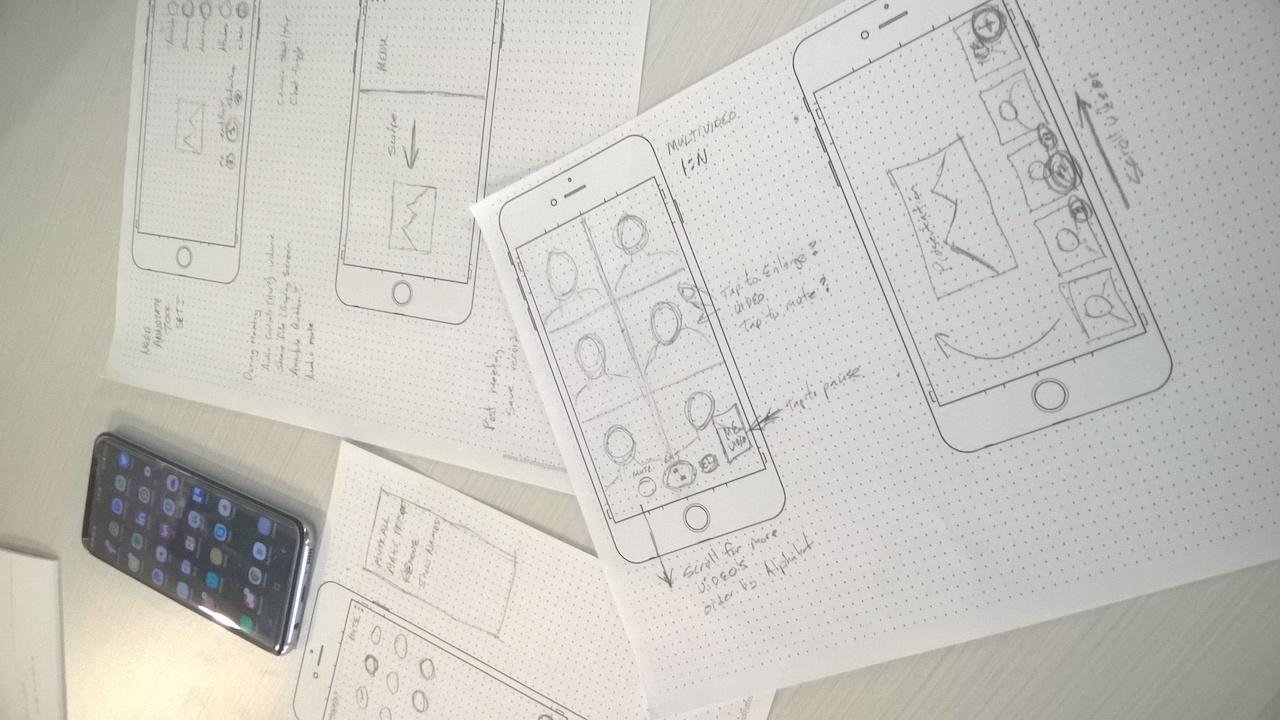
Diving in the deep end
As one might expect a lot of respondents preferred no meetings. But if unavoidable, in person conference room meetings were preferred, given the nature of the open office environment. One curious finding though was people often once comfortable don't want to leave their desk. Another known issue, that was validated, was the pain point of never enough conference room/huddle room availability. Respondents did like in theory the concept of taking a meeting outside on a sunny day as several mentioned if a room is not available it might be nice to take a walk.
Virtual Meeting Room Features
For the wireframe concepts there were several ways a user could get into a virtual meeting. A virtual meeting could be scheduled, or the user could start or be invited into an ad hoc meeting. The latter could be accomplished from a chat or an active audio or video call.
This example shows another user has invited them to join an ad hoc meeting.
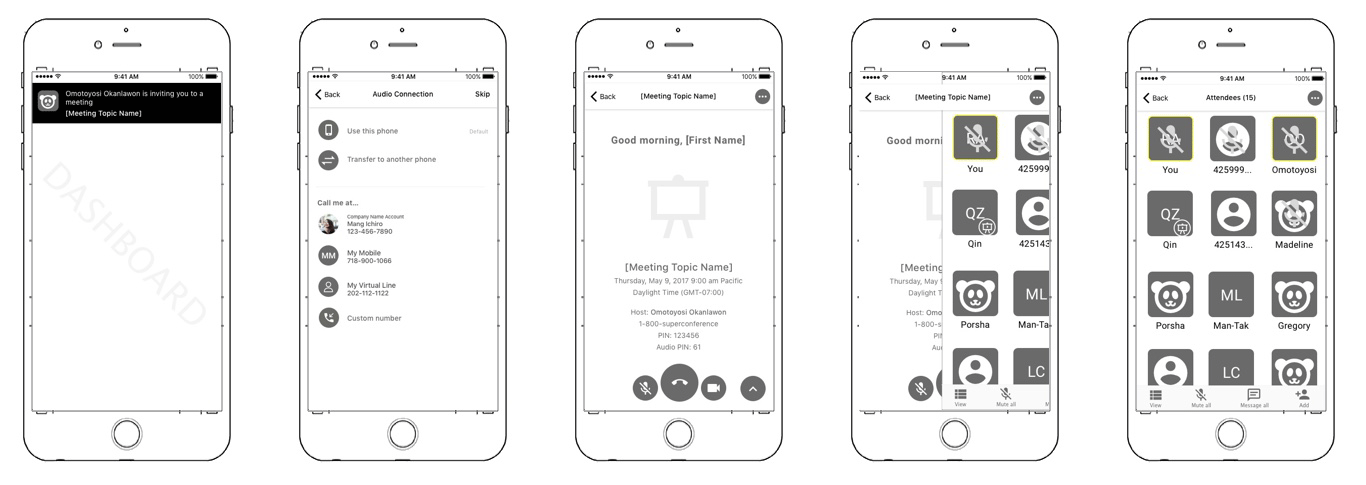
The Host had certain administration controls they could avail themselves of to manage the meeting, pretty much standard fare. A few of these are Lecture (Presenter) Mode, Lock Room, Mute All, Record Meeting, Admit and Excuse Participants.
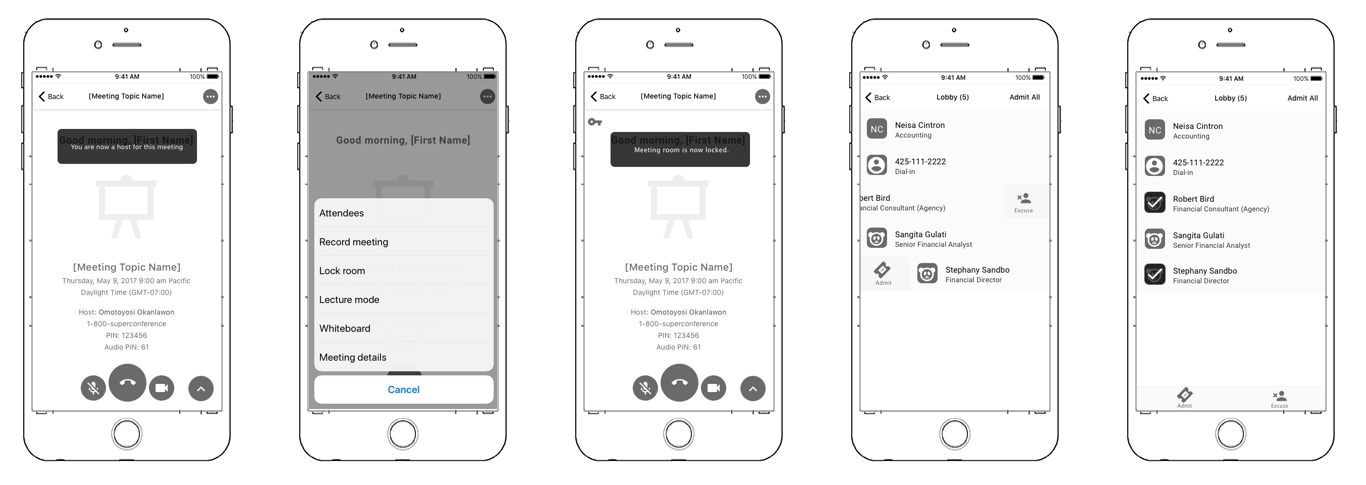
Screensharing and Annotation
Any participant could instigate a screenshare within the meeting app unless the host put the meeting into Lecture mode. The app will ask the user what to share and then inform the participants who is sharing their screen. The participants can also see who was sharing from the participant list as well as on screen.
Participants could view the screen share in Portrait and Landscape mode as well as pinch and zoom or use zoom in out controls to enlarge the presentation. In the final design the screenshare was always presented in Landscape mode.
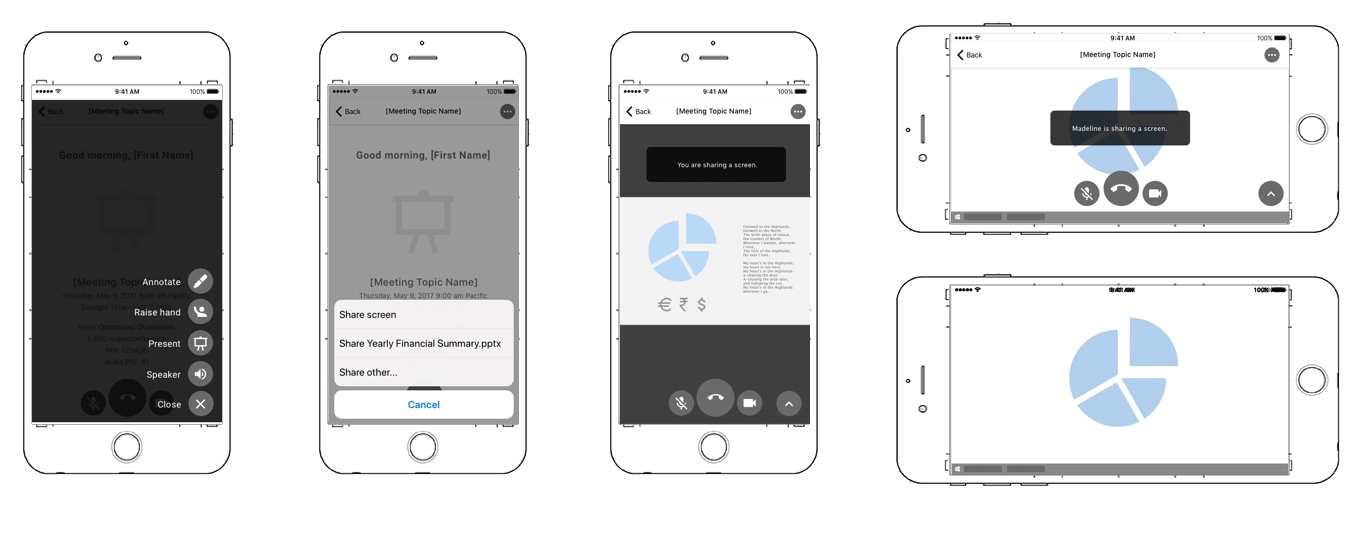
Thinking about Annotating, one of the main considerations was how advanced should this be particularly on a small screen like a mobile device. For MVP it made sense to use one brush size and limit the color choice to one color that was randomly assigned to each unique participant. Later the colors proved problematic as some colors got lost depending on the content and some colors were not accessible. I fixed the Accessibility part by using 16 accessible colors and decided if some colors repeat for users that is an acceptable tradeoff. I also added a dropshadow which helped a bit to prevent blending.
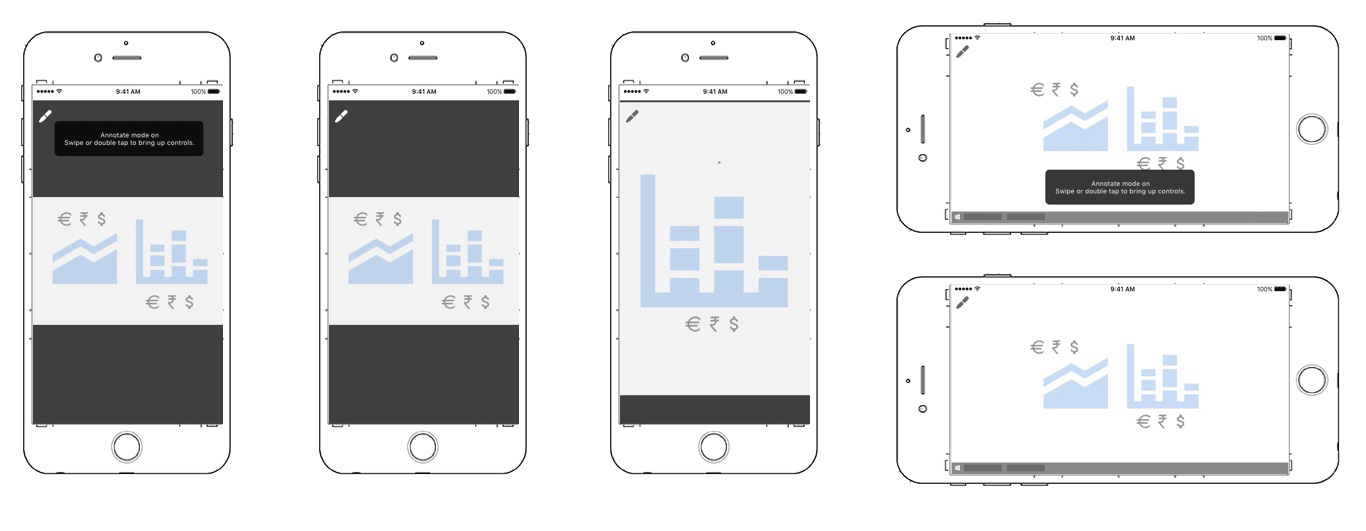
Virtual Whiteboard
The virtual whiteboard had an infinite canvas that all participants could simultaneously draw on or import files too. Participants could also create multiple canvases. The host could also record the whiteboard session and it would automatically be saved. The participants invited to the session would have access to it at any time. Any participant could export the whiteboard as a snapshot.
The feature list was generated through internal discussions, product competitive analysis, and refined through internal user testing.
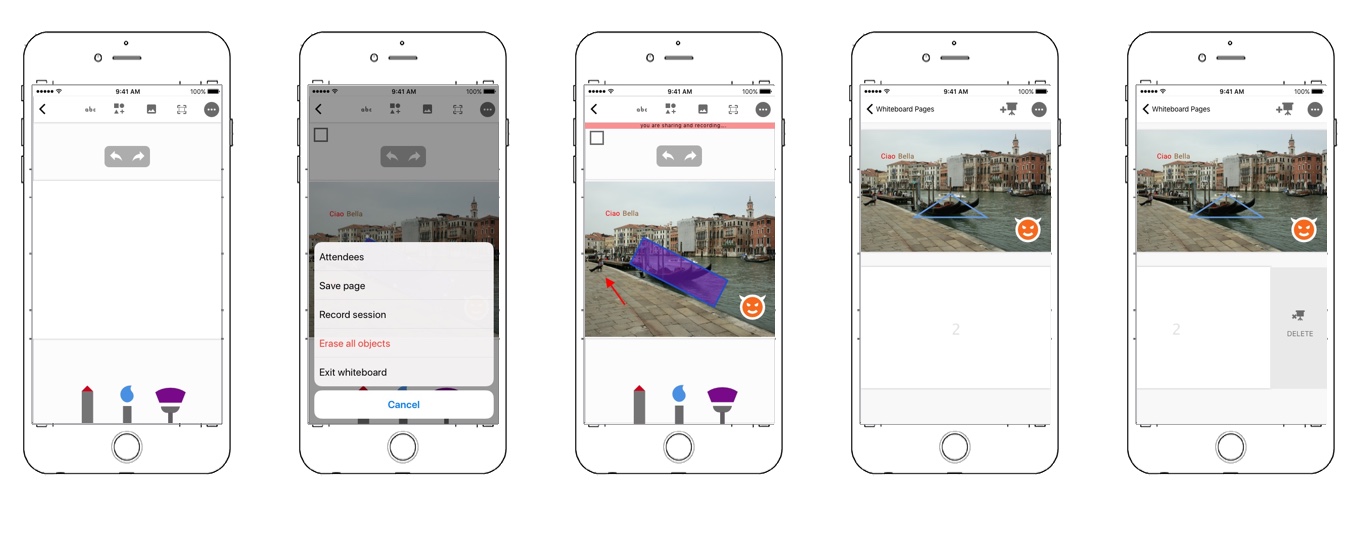
The participant could choose between 3 types of brushes with varying widths and add text using 16.5 million colors.
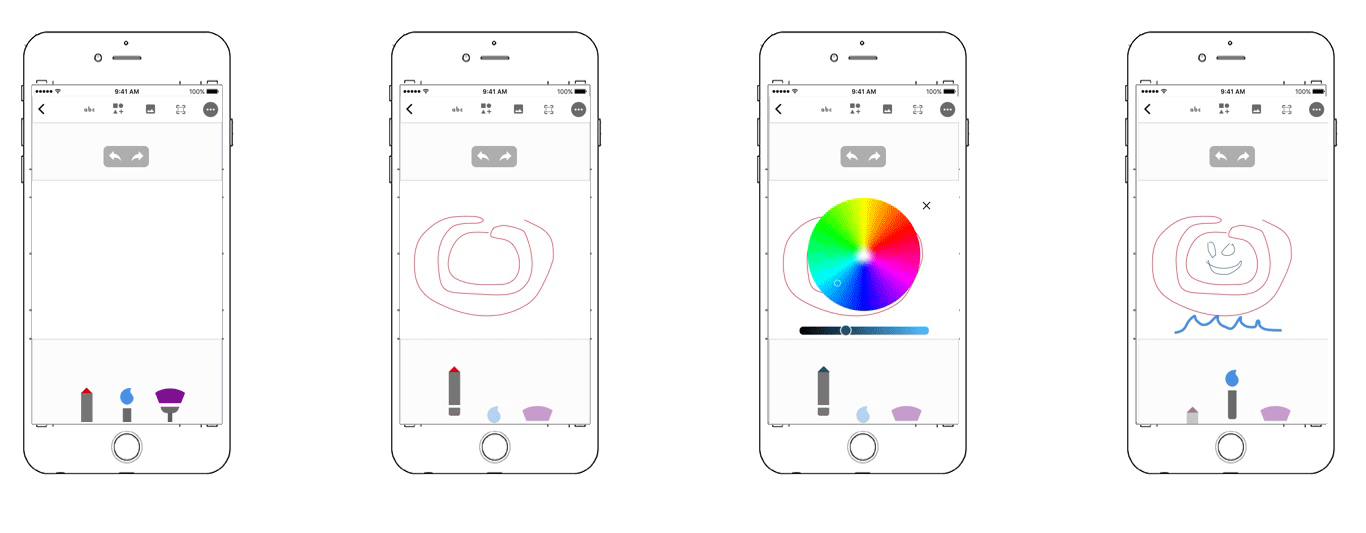
There were also tools to draw shapes, lines, arrows. The participant could add emoji’s and stickers to the canvas and import image files.
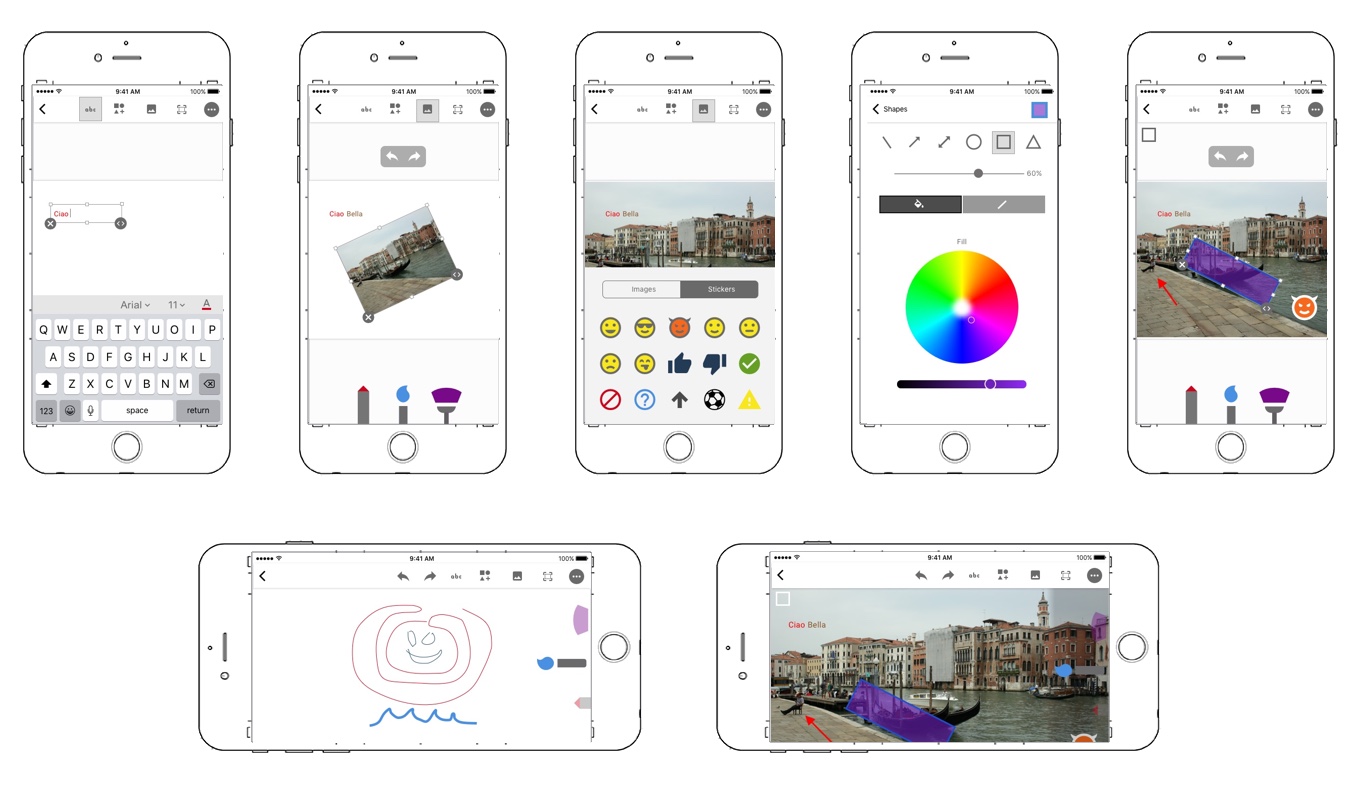
Audio and Video Calling Meeting Options
All participants can control how they connect audio in a meeting. Audio calls can be 1 on 1 or group calls. Participants can upgrade an active audio call into a meeting where they can screenshare or use the virtual whiteboard.
Participants can also connect audio from a scheduled or ad hoc meeting. They can use their device audio, connect via phone by either having the conference call the participant or they can dial in.
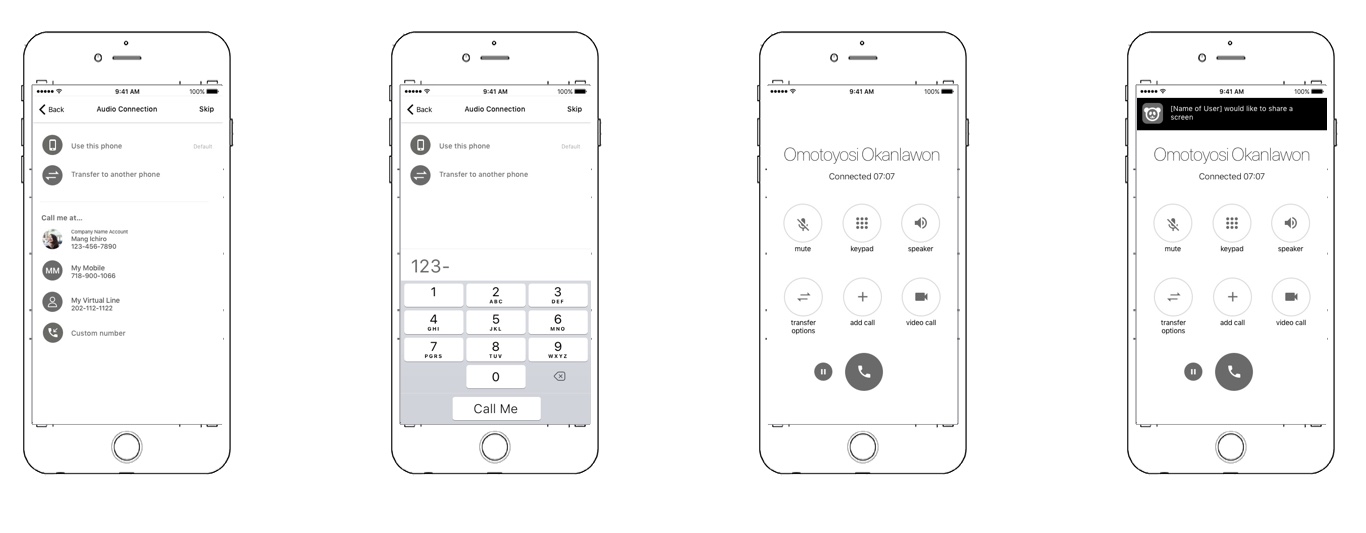
Participants can start a 1 on 1 video call or a group video call; they can also upgrade an audio call or meeting to a video call. Within a video call the participant can control which device camera they want to use and pause their video. They could switch between different video modes as well.
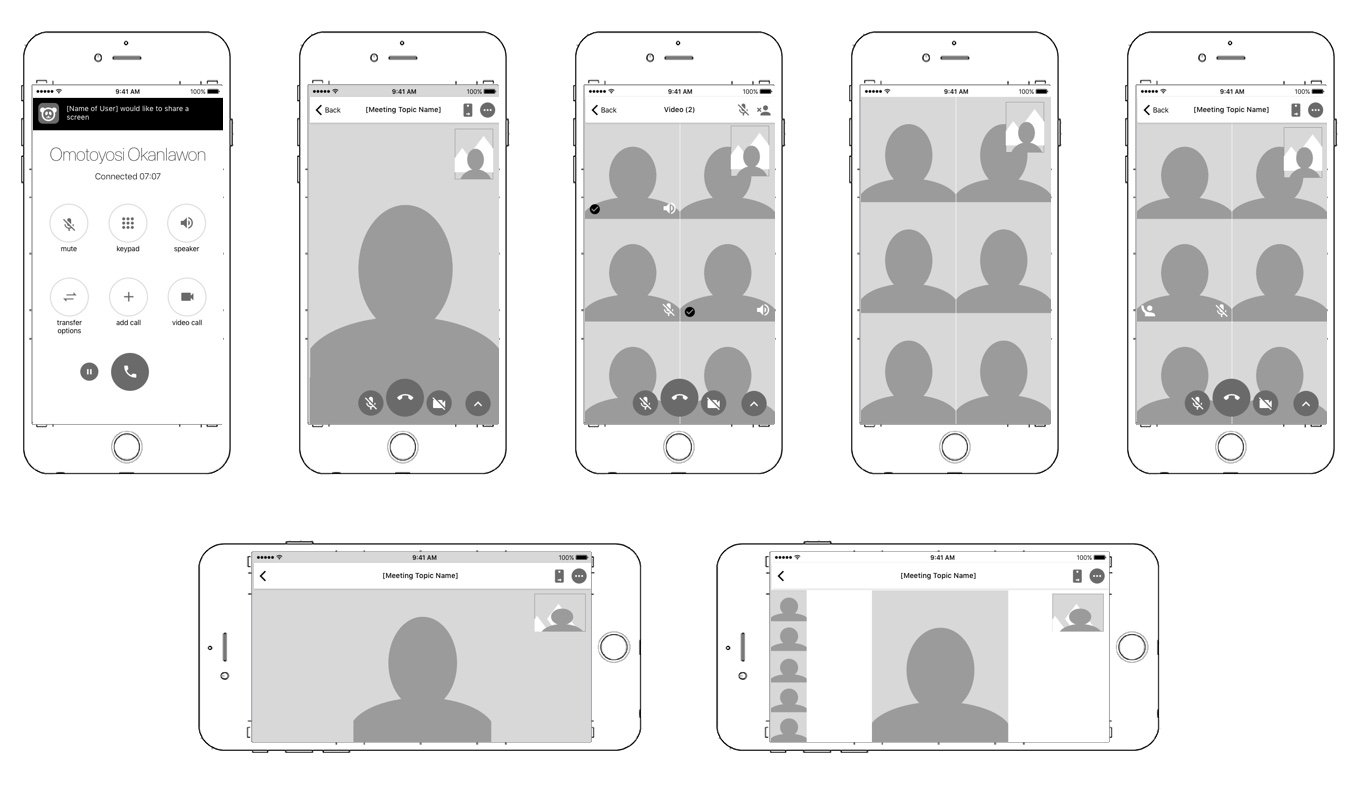
Hi Fi Visual Design
When exploring the visual style and language for the app, at the direction of stakeholders and the experience directors, we started with a dark themed palette. This reflects some of the early concepts and styleguide.
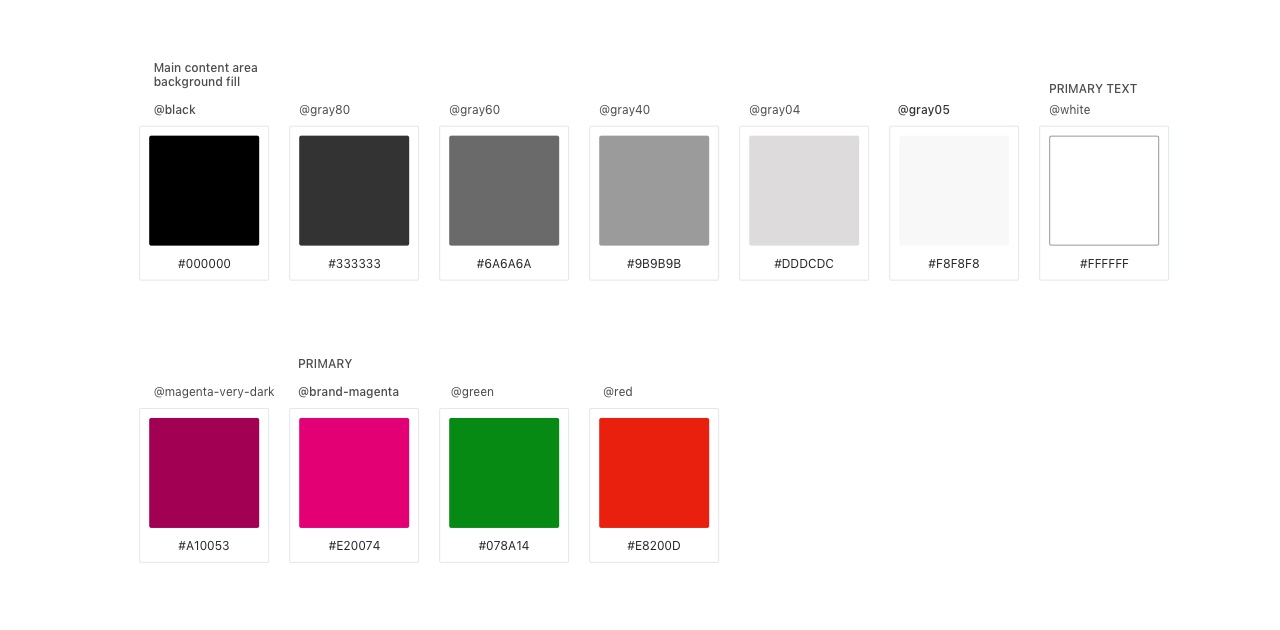
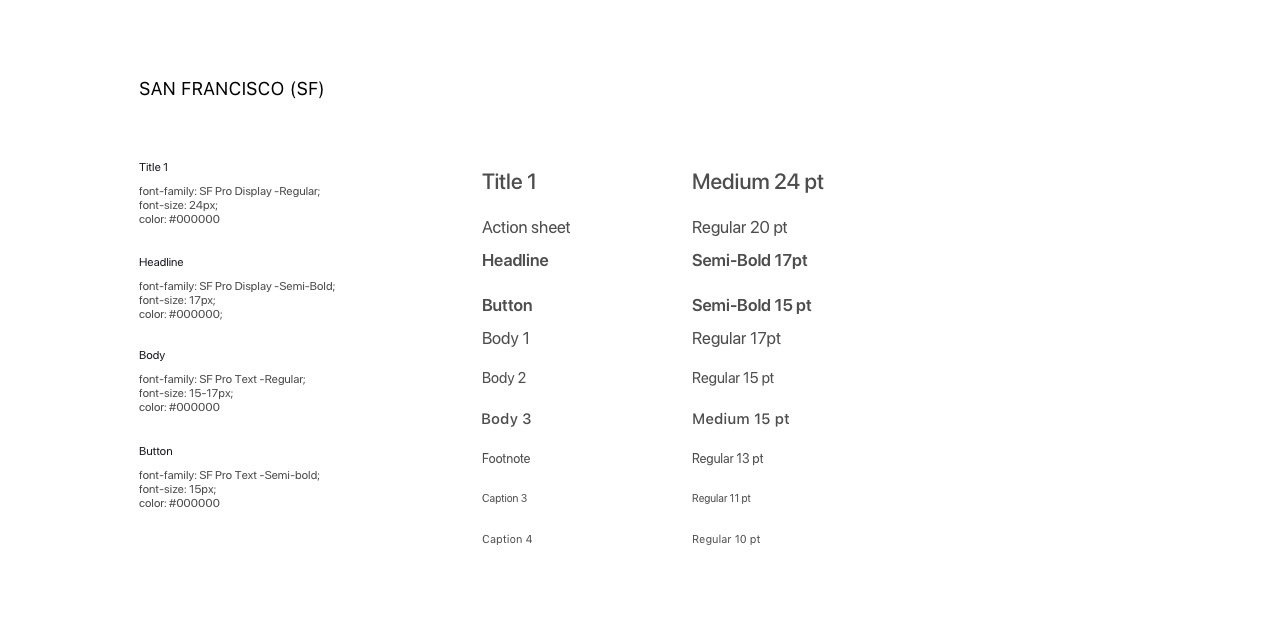

Impact
The product was not released commercially, however it accomplished:
- Network traffic technology efficency improvements by 7%
- Saving months of research and development by incorporating features into other core commercial products e.g. DIGITS
- Investing in building a 15-member UX team to support a broader product portfolio
- Promoting to Team Lead and overseeing the product design of multiple products

